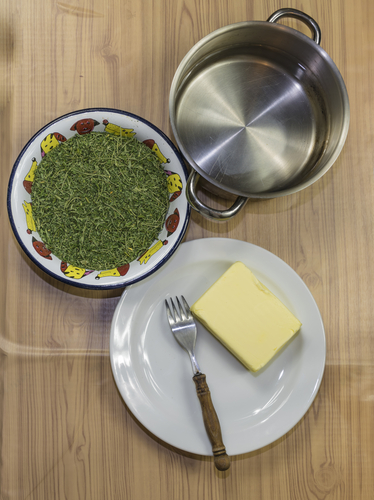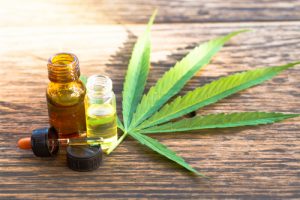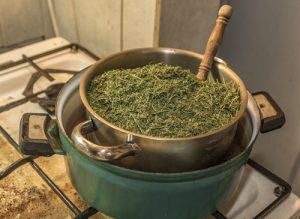How To Make Perfect Cannabutter
Posted 7 years ago by Ian Shutts

It’s time to learn how to make the perfect cannabutter, making cannabis edibles is, unfortunately, not as easy as sprinkling your dried buds onto a salad. Contrary to popular belief, that doesn’t actually make you high. Through a process of extracting cannabinoids into a fatty substance, you activate the potent parts of marijuana that make you high. You are then free to use that cannabis butter (cannabutter) in any cooking that might involve using butter or oil.
In this article, you will learn the entire process of making cannabutter from beginning to end so that you can start making some dank edibles. Although it is a lengthy process, it is extremely easy to make perfect cannabutter. Just follow these simple directions and start enjoying your own homemade edibles!
Decarboxylate first
Before soaking your buds in butter, it’s important to go through a process of decarboxylation. Your buds as they are do not actually contain THC. The compound present in marijuana pre-decarboxylation is THC-A, otherwise known as THC acid. Although this compound has a myriad of health benefits, it doesn’t have the psychoactive effect that stoners love. In order to convert THC-A to THC, the buds need to be heated until the “A” component falls off the chemical structure. Usually, vaping or smoking is all the decarboxylation that is required and it happens simultaneously with using. In the case of edibles, this step needs to be undertaken before the rest of the process can occur.
To successfully decarboxylate, follow these instructions carefully:
- Preheat the oven to 310℉. You can go as high as 400℉ (150-200 ℃), but anything higher than that will simply burn all of the terpenoids and cannabinoids off your buds. The idea is to convert THC-A to THC without burning off all of the other parts of the buds that you will eventually dissolve into the butter.
- Prepare your dried buds by grinding them. It’s unnecessary to grind them into a powder, but just so that they are small enough to scatter onto a baking tray.
- Spread them evenly across the baking tray using a piece of baking paper to protect them from the heat of the tray.
Bake them for anywhere between 20 and 40 minutes, moving them around every 10 minutes to ensure that the decarb happens evenly. - The buds will change color slightly when they are ready, becoming slightly darker than when you began. They should be crumbly in texture compared to sticky and firm.
After you have removed them from the oven, let them cool for a few minutes. You can now grind them down into a finer powder which you will use to make your cannabutter!
Cannabinoids like fatty solvents

The reason that you can’t throw some buds into a pot of boiling water is because cannabinoids are not water soluble. The active compounds of cannabis prefer fattier substances, and they stick to the fatty parts of butters and oils. For this reason, in order to extract the cannabinoids and terpenoids you have to choose a butter or oil as your solvent. Most cannabutter instruction sets will tell you to use unsalted butter because it typically has more uses than salted butter. However, you are not limited to using butter to make cannabutter.
If you lean away from animal products and prefer to make a vegan cannabutter, you can use coconut oil in its place. It also contains the fatty properties necessary for extracting cannabinoids and terpenoids and is perfect for using to make sweet as well as savory edibles. Some people even like to put coconut oil in their coffee, meaning you could turn your morning beverage into the perfect edible substance.
So the freedom is yours. Whether you choose to use butter, coconut oil or even olive oil, the only requirement is that it is oily or fatty. It will not suffice to use a solvent that is water based. From this point on, it’s your choice which substance you choose to use as a solvent.
Time to get cooking

So now it’s time to use your decarboxylated buds to create your cannabutter (or canna-coconut oil). Begin by melting your butter or oil into a liquid. Make sure you are using enough to completely submerge your buds. Also be aware of how much weed you are using. It will help you to measure out doses in the end. If you use one ounce of buds, then your final amount is going to contain one ounce. You can then measure out your butter or oil with full awareness of how much each dose contains.
Using a double boiler method (if you don’t have a slow cooker) is the best way to avoid burning anything. It means letting the pot containing the butter float in a pot of boiling water. Submerge your buds into the liquid oil or butter. The slower your cooking process, the better. The basic rule is that the longer you cook the butter or oil, the more cannabinoids you will be able to extract from your buds. In fact, if you have a slow cooker then you’re in business. At the very least, cook your buds for 5 hours. Anything less and you have wasted a large part of the active components inside your marijuana. Some people cook their cannabutter for up to 12 hours and sometimes even longer. The trick is to maintain a low heat so that your oil or butter do not burn.
When you are ready to stop cooking, strain out the plant material from your butter using a cheesecloth. This needs to be done before it cools down back into a solid. Let the final product cool down before storing it in a refrigerator or the freezer. Remember, it is an organic substance which means it doesn’t last forever. So you want to use your cannabutter or cannaoil soon after making it.
The plant material you’ve now cooked is basically wasted. Use it as compost or put it in the bin! Your final butter or oil is now ready for use by cooking it into your next baking project, frying your breakfast in it or simply by putting a tablespoon of it into your morning coffee! Enjoy the psychedelic effect of cannabis edibles!